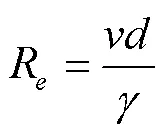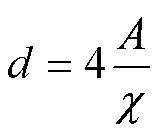拖拉机驾驶室内非常规污染物排放的CFD模拟与试验
2021-03-17侯秀宁王玉龙刘思瑶陈相安张学敏
侯秀宁,王玉龙,刘思瑶,陈相安,张学敏,2※
拖拉机驾驶室内非常规污染物排放的CFD模拟与试验
侯秀宁1,王玉龙1,刘思瑶1,陈相安1,张学敏1,2※
(1. 中国农业大学工学院,北京 100083;2. 北京市现代农业装备优化设计重点实验室,北京 100083)
为探究农机驾驶室内非常规污染物分布特征,该研究以东方红1804型拖拉机为对象,通过Fluent仿真与实际测试进行非常规污染物排放研究。结果表明:23℃静止密闭状态下,驾驶室横截面呼吸带和进风口中间截面区域内苯的平均质量分数仿真值为2.70 和3.03g/m3;拖拉机驾驶室内检测出的挥发性有机物包括烷烃、烯烃、醇、醛酮、酯类及其他化合物共241种,检测出的苯、甲苯、二甲苯、乙苯、苯乙烯的浓度分别为3.08、30.49、46.84、8.39和2.43g/m3,低于相关标准规定的最大限值;驾驶室内人体呼吸区域的苯浓度试验值与仿真值误差范围在7.7%~10.0%之间,挥发性有机物浓度的变化趋势与仿真结果大致相同。研究结果可为进一步研究农机驾驶室内的空气质量提供理论依据。
拖拉机;苯;计算流体动力学;驾驶室;挥发性有机物
0 引 言
随着农业机械化水平的提高和人们健康观念的不断提升,驾乘人员开始关注农机驾驶室的舒适性以及空气质量。农业机械主要运用于农林作业,其工作环境非常恶劣。作业时,农机驾驶室周围会产生大量的扬尘[1-2],进而影响驾驶室内的空气质量。除此之外,农机驾驶员工作时间长,劳动强度高。因此,驾驶室内空气质量特别是非常规污染物的排放严重威胁着驾乘人员的身体健康,展开对农用拖拉机驾驶室非常规污染物排放的研究至关重要。
乘用车车内空气质量的研究领先于对拖拉机驾驶室的研究。国外早在20世纪80年代初就开始对车内空气质量进行相应的研究与分析,并颁布一系列相关的法规和政策[3]。各国专家学者也针对不同类型、不同车龄的汽车、公交车等研究车内的苯、甲苯等挥发性有机化合物(Volatile Organic Compounds,VOC)含量[4-11]。中国2004年才进行《车内空气质量标准》的制定工作,2011年颁布了GB/T 27630—2011《乘用车内空气质量评价指南》,2016年对其进行修订,提高了部分有害物质的浓度限值[12]。陈利杰[13]对29辆轿车车内的空气质量进行了检测与分析,发现苯的浓度范围为0.03~1.5 mg/m3,超标率为48.28%。尤为可等[14]检测了几辆不同类型的中档轿车在静止状态下的车内空气质量,测试得到车内空气中的甲苯、二甲苯、总挥发性有机化合物(Total Volatile Organic Compounds,TVOC)最大浓度分别是0.45、0.28和2.19 mg/m3。
与乘用车相比,对农机驾驶室内空气质量的研究较少。Arslan等[15]测试了不同工况时拖拉机驾驶室内颗粒物(Particulate Matter,PM)的含量;杨晓等[16]针对大型拖拉机驾驶室内颗粒物质量浓度超标问题,选取不同空气净化方式,基于IAQx1.1-PM软件进行仿真分析。另外,还有少数机构对农机驾驶室的舒适性进行研究[17-22],但是对于驾驶室内非常规污染物排放的研究目前还处于空白期。本文通过应用流体计算软件Fluent对拖拉机驾驶室内非常规污染物苯进行数值模拟,并通过实际污染物测试验证模型可靠性,以期为后续驾驶室内非常规污染物的研究提供理论基础。
1 驾驶室污染物数值模拟
1.1 驾驶室内空气流动物理模型假设
驾驶室内空气流动状态通过雷诺数(Reynolds number,R)来确定,定义为


当农机处于静止密闭状态时,采用示踪气体衰减法测量驾驶室换气率,进而估算出驾驶室进风口的空气流速。示踪气体衰减法是将部分示踪气体通入到待测的驾驶室内,由于室内外存在空气交换,示踪气体的浓度会呈指数衰减,根据示踪气体浓度随着时间的变化计算出实际的通风量。本文采用CO2作为示踪气体,CO2的测量应用非色散式红外线二氧化碳分析仪,驾驶室换气率计算公式[23]为
式中-1为换气率,h-1;0为测定初始状态下示踪气体的浓度,mg/m3;C为经过时间的示踪气体浓度,mg/m3;C为示踪气体的本底浓度,mg/m3;为测定时间,h。
驾驶室进风口空气流速计算公式为

式中为驾驶室内流场的总体积,m3;为进风口表面积,m2。
将本文所研究拖拉机的驾驶室体积、进风口表面积以及驾驶室换气率带入公式(3),计算可得,当驾驶室处于静止密闭状态时,进风口空气流速为0.018 4 m/s。查阅相关文献[23],当驾驶室的空调系统处于外循环通风状态时,进风口空气流速为2 m/s。将拖拉机驾驶室处于静止密闭和通风状态时的进风口空气流速分别代入公式(1),得到不同状态的雷诺数,进而判断其空气流动状态。
基于以上理论分析,对驾驶室内的空气流动物理模型进行如下假设:
1)驾驶室内部密封良好,除了送风口和出风口没有空气泄漏;
2)驾驶室内部气体的流动速度较低,可认为是不可压缩流体,同时忽视由流体粘性力做功所产生的耗散热;
3)驾驶室内部的气流运动可视为等温流动,忽略热浮升力效应;
4)由于驾驶室内空气污染物浓度很低,在计算中忽略污染物对流体物性的影响;
5)驾驶室内部的空气为透明介质,不参与辐射;
6)当驾驶室处于静止密闭状态时,驾驶室内空气流动为层流流动;当驾驶室的空调系统打开或处于通风状态时,驾驶室内空气流动为湍流流动。
1.2 RNG k-ε模型
湍流模型选用计算精度更高、使用范围更广的RNG k-ε模型,湍动能和湍动耗散率的计算方程为

式中是流体密度,kg/m3;u是流速,m/s;x和x为流向分量;是湍动耗散率,m2/s2;是湍动能,m2/s2;G是的产生项,由平均速度梯度引起,kg/( m3s);µ是湍流有效粘性系数;1ε*反映了时均应变率。α, α,2ε为经验常数,Fluent软件提供了具体数值。
2 数值模拟与分析
2.1 三维建模
本文以东方红1804拖拉机为研究对象,应用CATIA对驾驶室进行三维模型建立,基本尺寸为长1 620 mm,宽1 615 mm,高1 713 mm,驾驶室内有1个座椅。送风口布置在顶棚,共4个,直径75 mm。2个回风口在顶棚前面两侧,尺寸为120 mm×190 mm,具体模型见图1。
2.2 仿真环境设置
2.2.1 网格划分
网格划分选用适应性更好的四面体法,为提高网格质量,对流场的送风口、回风口和污染源部位等计算数据变化梯度较大的部位进行局部加密。划分的网格模型节点数为262 120个,如图2所示,网格总单元数为1 447 440个,网格质量Element Quality大于0.8,Skewness的平均值为0.22,远小于0.8,网格质量符合要求且网格数量适中,能够进行后续模拟。
2.2.2 求解器和边界条件设置
1)选用RNG k-ε湍流模型,送风口设置为速度进口(velocity-inlet)。根据公式(3)的求解,当驾驶室处于静止密闭状态时,进风口空气流速设置为0.0184 m/s,方向垂直于边界。当拖拉机空调系统处于外循环通风状态时,进风口空气流速设置为2 m/s,方向垂直于边界。另外本文对拖拉机驾驶室内温度进行测量,将仿真环境温度设置为测量得到的驾驶室室温23 ℃。
2)污染源设置为质量进口(mass-flow-inlet)。为了简化模型,设定驾驶室内的污染源为顶棚、座椅、仪表板,不同材料的温度、材料侧和空气侧的扩散系数、材料中初始VOCs释放量不同,通过公式(6)计算污染源释放边界条件,计算中设置计算次数为100。
式中为材料内的VOCs扩散时间,s;D为材料内的VOCs传质扩散系数,m2/s;为材料的厚度,m;为材料中所含VOCs 物质的质量,mg;为单位面积材料的散发速率,mg/(m2·s)。
3)回风口边界条件设置为出流(outflow)。
4)其余壁面为无滑移、绝热、无污染源释放的壁面(wall)。
2.3 参考截面选取
考虑对人体影响较大的驾乘人员呼吸带区域和驾驶室内部空气流动较大的送风口区域,选取2个参考截面进行研究,分别为=1.15 m的驾驶室横截面呼吸带区域(截面I)和=0 m的驾驶室送风口中截面区域(截面II)。将送风口正对座椅底部设置为原点(0, 0, 0)选取人体呼吸区域对应点(0, 186.5, 1 150)作为参考点,其位置位于方向盘上部和座椅顶部连线上,高度与驾乘人员呼吸带高度相当,如图5所示。同时由于苯的高致癌性[24],主要进行拖拉机驾驶室内苯浓度的数值模拟研究。
2.4 仿真分析
2.4.1 23 ℃密闭与通风状态下驾驶室气流速度场分析
图4为23 ℃时,密闭状态与通风状态下的驾驶室内截面II的速度场流线图。从图4a可以看出,在座椅位置处和座椅后部之间存在空气扰动现象,形成漩涡,有利于污染物的迅速扩散。因为送风口的气流速度较低(0.018 4 m/s),在仪表盘和座椅下方(驾驶员脚所在位置)位置处基本不存在空气扰动,容易造成污染物大量堆积,形成高浓度死区。从图4b可以看出,在驾驶室送风口气流速度为2 m/s时,不仅在座椅位置处和座椅后部大部分区域存在强烈的空气扰动现象,在座椅前方与仪表盘下部的地方(驾驶员脚所在位置)也存在空气扰动现象,进而形成漩涡,有利于污染物的快速扩散。
2.4.2 23 ℃密闭状态下驾驶室内苯浓度分布
图5为拖拉机驾驶室在23 ℃、静止密闭1、2、6、8、12和16 h时,驾驶室内不同参考截面的苯质量分数分布图。从图5a可以看出,由于座椅靠背处上方靠近空调的出风口,因此这部分区域苯浓度较低,随着密闭时间的增加分布较均匀。截面Ⅰ的整体苯浓度水平呈现中间低,两侧高的分布特征,其中,位于仪表盘正上方位置处的苯浓度较高。从图5b可以看出,由于仪表盘和座椅下方(驾驶员脚所在位置)位置处基本不存在空气扰动,所以该位置苯浓度较高。
图6是苯浓度随密闭时间的变化趋势。从截面Ⅰ和点的变化中可以看出,密闭10 h后,各点的苯平均浓度达到平衡,不再发生变化。当驾驶室处于静止密闭状态,因为车内外存在气体交换(气体交换速度为0.018 4 m/s),驾乘人员有一定的风感,驾驶室内存在一定的空气扰动,使得截面Ⅱ的苯平均浓度相对截面Ⅰ较高,达到稳定的时间也相对较长,密闭12 h后截面Ⅱ各点的苯浓度基本不发生变化。
当驾驶室内的苯质量分数达到平衡时,点、截面Ⅰ和截面Ⅱ的苯平均浓度分别为1.81、2.70和3.03g/m3。虽然参考截面的苯浓度均在车内空气中有机物浓度要求的极限值以下,但是长时间处在含有苯的环境中会对人体的健康产生很大的危害。

图6 苯浓度随时间的变化趋势
2.4.3 23 ℃外循环通风状态下驾驶室苯浓度分布
驾驶室密闭16 h后,将送风口气流速度设置为2 m/s,通风30 min后驾驶室内的苯的质量分数分布如图7所示。从图中可以看出,随着新鲜空气的进入,截面I和截面II的苯浓度均有所降低,其中截面I苯的平均质量百分数降到1.71g/m3、截面II降到1.98g/m3,其中座椅后方浓度降低最大,顶棚处浓度降低较小。从图4b驾驶室内速度流线图可知,在座椅后方存在强烈的空气扰动现象,可以在一定程度上带走部分污染物,而顶棚处的气流速度较小,易造成污染物聚集。可见,通风可以在一定程度上提高排污效率,有利于驾驶室内空气质量的提高。
3 驾驶室污染物测试试验
3.1 试验对象
本文的试验对象为东方红1804型拖拉机,该拖拉机具有5年车龄,其内饰材料主要包括海绵、皮革、有机玻璃和ABS工程塑料。
3.2 试验方法
根据HJ/T 400—2007《车内挥发性有机物和醛酮类物质采样测定方法》中对试验环境的要求[25],在开始采集样本之前,将待测车辆放置在环境气流速度≤0.3 m/s,甲苯和甲醛浓度都不超过0.02 mg/m3的恒温恒湿地下室中静置至少6 h,试验前去掉驾驶室内表面覆盖物(如出厂时为了保护座椅、地毯等而应用的塑料薄膜),将门窗(包括天窗)全部开启。静置6 h后对驾驶室进行封闭,封闭时间为16 h,为避免重复开闭车门对驾驶室内空气污染物浓度产生影响,密闭前将采样导管(不吸收、不释放挥发性有机物的聚四氟乙烯或者不锈钢管,使用前采用高纯氮气进行预处理)经车门缝隙放入驾驶室内,通过支架固定在采样位置,并利用锡箔纸保证采样处的密封,尽可能避免与外界环境进行空气交换(如图8a)。驾驶室内采样点位于方向盘上部和座椅顶部连线上,采样点高度与驾乘人员呼吸带高度相一致(如图8b)。驾驶室密闭16 h后,进行挥发性有机物的样品采集和数据记录,记录内容包括采样时的温度和湿度等数据。
3.2.1 驾驶室内TVOC采样方法
驾驶室内TVOC的样本采集方法主要依据HJ/T 400 —2007《车内挥发性有机物和醛酮类物质采样测定方法》[24]和美国国家环保局的标准方法[26]。利用填充有聚2,6-二苯基对苯醚(Tenax TA)的采样管采集驾驶室内挥发性有机物,使用恒流气体采样器进行样品采集,采样流量为100 mL/min,采样时间30 min。为了确保流量恒定,采样开始与结束前使用干式气体流量计进行流量校准,保证流量偏差小于5%。采样结束后,将采样管用铝箔密封,置于冰箱内(温度低于4 ℃)留待分析。
3.2.2 驾驶室内TVOC分析方法
驾驶室内TVOC的分析应用二次热解析-毛细管气相色谱/质谱联用方法[26]。利用干燥的惰性气体对采样管进行吹扫,随后将采样管加热,使得热脱附出的挥发性有机组分可以随载气进到冷阱之中,经过二次热脱附后进入毛细管气相色谱/质谱联用仪对挥发性有机组分进行分析。本试验采用的仪器为安捷伦5975-6890型气质联用仪,其压力控制精度为6.9 Pa,扫描范围为50~300 amu。
3.3 TVOC测试结果与分析
通过试验,在拖拉机驾驶室中一共定性检测出241种挥发性有机物,分别属于烷烃、烯烃、芳香类化合物、卤代烃、醇、醛酮、酯类以及其他化合物,其中烷烃所占比例最大,其次是芳香族化合物、酯类物质。图9为总离子流色谱图。
参照GBT 27630—2011《乘用车内空气质量评价指南》[27]对被测拖拉机驾驶室内的VOC进行定量分析,结果如图10所示。由图10可知,驾驶室内的苯、甲苯、二甲苯、乙苯、苯乙烯的浓度分别为3.08、30.49、46.84、8.39和2.43g/m3均低于GBT 27630—2011中所规定的限值。分析原因为被测拖拉机车龄较大,且该标准是适用于乘用车的标准与指南,考虑到乘用车的密封性高于农业机械,且其内饰材料选用更为高档,因此该标准与指南并不完全适用于农业机械。另外,拖拉机的密封性相对乘用车来说较差,在相同试验条件下,密封性对驾驶室内空气中有机物的采集会产生很大的影响。
3.4 仿真结果验证
为验证数值模拟结果的准确性,将密闭16 h后点苯浓度的3次试验测定值与仿真值1.81g/m3进行对比(见表1),可得3次试验值均大于仿真值,相对误差范围为7.7%~10.0%,误差值较小,仿真可靠。
为了进一步验证数值模拟结果的可靠性,采用便携式手持检测仪对驾驶室内采样点的TVOC进行实时检测,得到18 h内的TVOC浓度变化趋势,如图11。从图中可以看出,在驾驶室静止密闭状态下,相比较于图6,实际测得的污染物浓度积累较慢,污染物浓度曲线斜率明显低于模拟曲线。分析原因,因为驾驶室的密封性较差,而在模拟过程中认为驾驶室是绝对密封的,所以导致上述曲线斜率问题的产生,但是采用便携式手持检测仪得到的浓度变化趋势与模拟计算的变化趋势大致相同,12 h后驾驶室内TVOC浓度基本达到平衡,平衡后TVOC的浓度约103g/m3。因此可以证明模拟结果的准确性和可靠性。

表1 苯浓度仿真与试验数据
4 结 论
1)通过应用Fluent对拖拉机驾驶室内的污染物苯进行数值分析,得到其扩散过程、空间和时间分布特征。其中,在驾驶室静止密闭状态下(温度为23 ℃),密闭10小时后,驾驶室横截面呼吸带区域(截面I)内各点的苯平均质量分数达到2.70g/m3且基本达到稳定状态;密闭12 h后驾驶室进风口中间截面(截面II)苯质量分数达到3.03g/m3且基本达到平衡。除此之外,驾驶室在外循环通风状态下,随着新鲜空气的进入,可以有效稀释驾驶室内污染物的浓度,起到良好的排污作用,通风30 min后,驾驶室内苯浓度有明显的下降。
2)通过对拖拉机驾驶室空气取样检测发现,在受检拖拉机驾驶室中一共定性检测出挥发性有机物241种;而且驾驶室内的检测出的苯、甲苯、二甲苯、乙苯、苯乙烯的浓度分别为3.08、30.49、46.84、8.39和2.43g/m3,均低于GBT 27630—2011《乘用车内空气质量评价指南》中所规定的最大浓度值,但是若长期处于该种情形下,也会对驾乘人员的身体健康产生威胁。
3)通过二次热解析-毛细管气相色谱/质谱联用法试验发现,密闭16 h后拖拉机驾驶室内人体呼吸区域的苯浓度试验值与仿真值的误差范围为7.7%~10.0%;通过便携式手持检测仪试验发现,18 h内的拖拉机驾驶室人体呼吸区域的挥发性有机化合物浓度的变化趋势和仿真时该区域苯浓度的变化趋势大致相同,证明模拟结果的准确性和可靠性,为后续拖拉机驾驶室非常规污染物的排放研究提供了理论基础。
[1] 钟文杰,徐红梅,徐奥. 基于CATIA的拖拉机驾驶室人机系统舒适性分析与评价[J]. 江苏大学学报:自然科学版,2017,38(1):47-51.
Zhong Wenjie, Xu Hongmei, Xu Ao. Comfort analysis and evaluation of man-machine system in tractor cab based on CATIA[J]. Journal of Jiangsu University: Natural Science Edition, 2017, 38(1): 47-51. (in Chinese with English abstract)
[2] 章倩,朱思洪. 拖拉机驾驶室舒适性满意度情况调查研究[J]. 拖拉机与农用运输车,2009,36(5):3-5.
Zhang Qian. Zhu Sihong. Investigation and research on satisfaction about tractor cab comfort[J]. Tractor and Farm Transporter, 2009, 36(5): 3-5. (in Chinese with English abstract)
[3] 冯顺利. 汽车车内空气质量检测和评价方法的研究[D]. 西安:长安大学,2008.
Feng Shunli. Study on the Method of Measurement and Estimation of the Pollution Gas in Automobile[D]. Xi’an: Chang’an University, 2008. (in Chinese with English abstract)
[4] Marion J F, Brent D K. Measurement of volatile organic compounds inside automobilesy[J]. Journal of Exposure Analysis and Environmental Epidemionlogy, 2003(13): 31-41.
[5] Yoshida T. Interior air pollution in automotive cabins by volatile organic compounds diffusing from interior materials II: Influence of manufacturer, specifications and usage status on air pollution, and estimation of air pollution levels in initial phases of delivery as a new car[J]. Indoor and Built Environment, 2006, 15(5): 445 -465.
[6] Yoshida T, Matsunaga I. A case study on identification of airborne organic compounds and time courses of their concentrations in the cabin of a new car for private use[J]. Environment International, 2006, 32: 58-79.
[7] Chien Y C. Variations in amounts and potential sources of volatile organic chemicals in new cars[J]. Science of the Total Environment, 2007(382): 228–239.
[8] Parra M A, Elustondo D, Berniejo R, et al. Exposure to volatile organic compounds (VOC) in public buses of Pamplona, Northern Spain[J]. Science of the Total Environment, 2008, 404(l): 18-25.
[9] Marion J F, Brent D K. Measurement of volatile organic compounds inside automobiles[J]. Journal of Exposure Analysis and Environmental Epidemiology, 2003, 13(l): 31 -34.
[10] Kim S R, Dominci F, Buckly T J. Concentrations of vehicle-related air pollutants in an urban parking garage[J]. Environmental Research, 2007, 105(3): 291-299.
[11] Otmar G, Salvatore T, Josefa B M, et al. Investigation of volatile organic compounds and phthalates present in the cabin air of used private cars[J]. Environment International, 2009, 35(8): 1188–1195.
[12] 吕国会. 浅谈降低汽车内饰件用聚氨酯材料VOC的措施[J]. 化学推进剂与高分子材料,2018(1):1-12.
Lv Guohui. Talking about means to reduce VOC of polyurethane materials for automotive interior parts[J]. Chemical Propellants & Polymeric Materials. 2018(1): 1-12. (in Chinese with English abstract)
[13] 陈利杰. 新车内空气中几种有害物质污染状况调查[J]. 职业与健康,2007,23(7):536-537.
Chen Lijie. Investigation of the status of formaldehyde, Benzene and CO2 contamination inside new cars[J]. Occupation and Health, 2007, 23(7): 536-537. (in Chinese with English abstract)
[14] 尤为可,葛蕴珊,冯波等. 轿车内微环境空气污染状况的实验研究[J]. 北京理工大学学报,2008,28(4):310-313.
You Kewei, Ge Yunshan, Feng Bo, et al. A study on air pollution inside passenger vehicles[J]. Transactions of Beijing Institude of Technology, 2008, 28(4): 310-313. (in Chinese with English abstract)
[15] Arslan S, Aybek A, Ekerbicer H. Measurement of personal PM10, PM2. 5 and PM1 exposures in tractor and combine operations and evaluation of health disturbances of operators[J]. Journal of Agricultural Sciences, 2010, 16(2): 104-115.
[16] 杨晓,毛恩荣,Zhang J S,等. 大型拖拉机驾驶室PM10和PM2.5净化效果仿真分析[J]. 农业机械学报,2018,49(11):365-371.
Yang Xiao, Mao Enrong, Zhang J S, et al. Simulation of cleaning effect of PM10and PM2.5in high-power tractor cab[J]. Transactions of the Chinese Society for Agricultural Machinery, 2018, 49(11): 365-371. (in Chinese with English abstract)
[17] 张开兴,张斓,杨刚,等. 基于骨骼关节识别的拖拉机驾驶室座椅舒适度评价[J]. 农业机械学报,2020,51(S2):521-529,543.
Zhang Kaixing, Zhang Lan, Yang Gang, et al. Evaluation of seat comfort in tractor cab based on bone joint recognition[J]. Transactions of the Chinese Society for Agricultural Machinery, 2020, 51(S2): 521-529, 543. (in Chinese with English abstract)
[18] 杨晓,毛恩荣,Zhang J S等. 大型拖拉机驾驶室热舒适性评价[J]. 农业机械学报,2018,49(S1):470-476.
Yang Xiao, Mao Enrong, Zhang J S, et al. Cab thermal comfort assessment of high-power tractor[J]. Transactions of the Chinese Society for Agricultural Machinery, 2018, 49(S1): 470-476. (in Chinese with English abstract)
[19] 杨飞,史庆春,万小玲等. 基于Pro/E Manikin的拖拉机驾驶室人机工程评价方法[J]. 农业工程学报,2013,29(9):32-38.
Yang Fei, Shi Qingchun, Wan Xiaoling, et al. Ergonomics evaluation method of tractor cab based on Pro/E Manikin[J]. Transactions of the Chinese Society of Agricultural Engineering (Transactions of the CSAE), 2013, 29(9): 32-38. (in Chinese with English abstract)
[20] 杨洋,李宛骏,李延凯,等. 基于生物力学模型的拖拉机离合踏板人机工程设计[J]. 农业工程学报,2019,35(3):82-91.
Yang Yang, Li Wanjun, Li Yankai, et al. Ergonomics design of tractor clutch pedal based on biomechanical model [J]. Transactions of the Chinese Society of Agricultural Engineering (Transactions of the CSAE), 2019, 35(3):82-91. (in Chinese with English abstract)
[21] 仇莹,朱忠祥,毛恩荣,等. 农业装备驾驶室虚拟人机工程学设计与评价[J]. 农业工程学报,2011,27(3):117-121.
Qiu Ying, Zhu Zhongxiang, Mao Enrong, et al. Virtual ergonomics design and evaluation of agricultural equipment cab[J]. Transactions of the Chinese Society of Agricultural Engineering (Transactions of the CSAE), 2011, 27(3):117-121. (in Chinese with English abstract)
[22] 谢普康,陈洪涛,商潭苏等. 基于STAR-CCM+的某型拖拉机驾驶室热舒适性研究[J]. 拖拉机与农用运输车,2016,43(3):14-17.
Xie Pukang, Chen Hongtao, Shang Tansu, et al. Research of tractor driver thermal comfort based on STAR-CCM+[J]. Tractor & Farm Transporter, 2016, 43(3): 14-17. (in Chinese with English abstract)
[23] 尤可为,葛蕴珊,王务林等. 车内污染物的测定和数值模拟研究[J]. 汽车工程,2010,32(8):727-730.
You Kewei, Ge Yushan, Wang Wulin, et al. A study on the measurement and numerical simulation of in-vehicle air pollutants[J]. Automotive Engineering, 2010, 32(8): 727-730. (in Chinese with English abstract)
[24] 陈智雄. 试析装修材料对室内环境的污染及其控制措施[J]. 陶瓷,2020 (12):122-123.
Chen Zhixiong. Analysis of the pollution of decoration materials to indoor environment and its control measures[J]. Ceramics,2020 (12):122-123. (in Chinese with English abstract)
[25] 国家环境保护总局. HJ/T 400—2007,车内挥发性有机物和醛酮类物质采样测定方法[S]. 北京:中国环境科学出版社,2007.
[26] US Environmental Protection Agency. Determination of volatile organic compounds in ambient air using active sampling onto sorbent tubes[R]. Cincinnati: Center for Environment Research Information Office of Research and Development, 1999: 17-49.
[27] 环境保护部. GB/T 27630—2011,乘用车内空气质量评价指南[S]. 北京:中国环境科学出版社,2012.
CFD simulation and test of unconventional pollutant emissions in tractor cab
Hou Xiuning1, Wang Yulong1, Liu Siyao1, Chen Xiang’an1, Zhang Xuemin1,2※
(1.,,100083,; 2.,100083,)
The widespread distribution of unconventional pollutants potentially exposes to the machinery cab, particularly with the continuous improvement of agricultural mechanization in China in recent years. Taking a tractor of Dongfanghong 1 804 as the research object, this study aims to clarify the emission characteristics of unconventional pollutants in the cab using the combination of simulation and test. 1) The diffusion process of unconventional pollutants in the cab was simulated by a Computational Fluid Dynamics (CFD) software (Fluent). The initial conditions were set at the ambient temperature of 23 ℃, where benzene was selected as a representative pollutant, considering the high carcinogenicity of benzene. Two reference sections were selected as the cross-sectional area of the breathing belt and the middle sectional area of the air supply outlet in a cab. The reason was that the breathing belt area of drivers with a great impact on the human body, while, the outlet area of air supply with a large air flow in the cab. In addition, the reference point was selected from the human breathing area, each of which was located on the connecting line between the upper part of the steering wheel and the top of the seat. The height was aligned with the height of the breathing belt of the driver and passengers. After that, a CFD simulation was conducted to obtain the temporal and spatial distribution of benzene concentration in different sections and reference points. The simulation results showed that the benzene concentration in each section basically reached equilibrium under the condition of a closed cab after 12 hours. The average benzene concentrations at the reference point and two reference sections were 1.81, 2.70, and 3.03g/m3, respectively, which were below the limit value required for the concentration of organic matter in the air in the vehicle. Furthermore, the pollutant concentration in the cab decreased significantly under the condition of external circulation ventilation, where the average mass percentage of benzene in two sections decreased to 1.71 and 1.98g/m3. Correspondingly, the entry of fresh air was conducive to the improvement of air quality in the cab. 2) A systematic test was carried out to verify the concentration of pollutants in the cab. According to HJ/t400-2007 sampling and determination s of volatile organic compounds and aldehydes and ketones in vehicles and the standard TO-17 of the National Environmental Protection Agency (EPA), the volatile organic compounds in the cab were collected by a Tenax TA tube, afterward they were analyzed by thermal desorption gas chromatography/mass spectrometry. It was found that there were a wide variety of volatile organic compounds detected in the cab of agricultural machinery, including 241 kinds of alkanes, olefins, halogenated hydrocarbons, alcohols, aldehydes, ketones, esters, and other compounds, of which alkanes accounted for the largest proportion, followed by aromatic compounds and esters. The detected concentrations of benzene, toluene, xylene, ethylbenzene, and styrene were 3.08, 30.49, 46.84, 8.39,and 2.43g/m3, respectively, which were lower than the maximum concentration specified in the national standard of GB/T27630-2011 guidelines for the evaluation of air quality in passenger cars. A comparison was made on the measured benzene concentration at the reference point after being closed for 16 hours with the simulation. It was found that the error range was 7.7%-10.0%, indicating the more reliable simulation. In addition, a portable handheld detector was used to detect the changing trend of total volatile organic compounds (TVOC) concentration in the cab within 18 hours at the reference point under the condition of the closed cab, in order to further verify the reliability of the numerical simulation. It was found that the TVOC concentration in the tractor cab basically reached equilibrium after 12 hours, and the changing trend was roughly the same as that of benzene concentration at the reference point during simulation, indicating the high reliability and accuracy of the model. This finding can provide a theoretical basis for further study of air quality in an agricultural machinery cab.
tractor; benzene; computational fluid dynamics; cab; volatile organic compounds
侯秀宁,王玉龙,刘思瑶,等. 拖拉机驾驶室内非常规污染物排放的CFD模拟与试验[J]. 农业工程学报,2021,37(24):22-29.doi:10.11975/j.issn.1002-6819.2021.24.003 http://www.tcsae.org
Hou Xiuning, Wang Yulong, Liu Siyao, et al. CFD simulation and test of unconventional pollutant emissions in tractor cab[J]. Transactions of the Chinese Society of Agricultural Engineering (Transactions of the CSAE), 2021, 37(24): 22-29. (in Chinese with English abstract) doi:10.11975/j.issn.1002-6819.2021.24.003 http://www.tcsae.org
2021-08-21
2021-10-11
科技部创新方法工作专项(2016IM030200)
侯秀宁,博士生,研究方向为车辆节能环保与新能源技术。Email:Houxiuning@163.com
张学敏,博士,副教授,博士生导师,研究方向为车辆节能环保与新能源技术。Email:xuemin_zh@cau.edu.cn
10.11975/j.issn.1002-6819.2021.24.003
S232.3
A
1002-6819(2021)-24-0022-08
